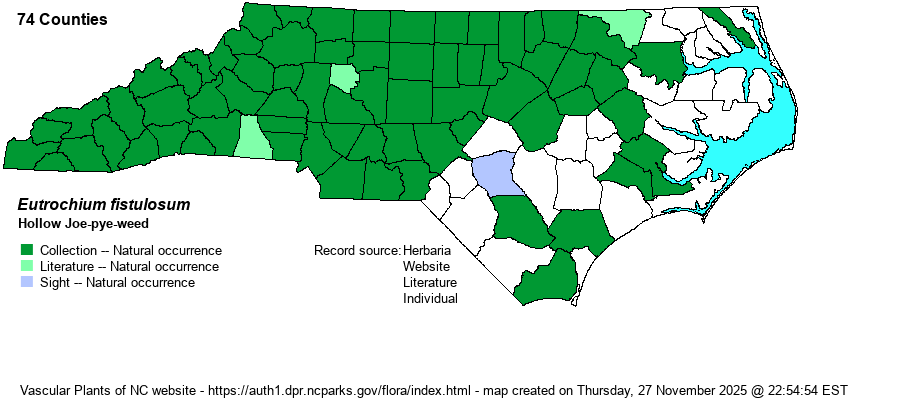| Author | (Barratt) E.E. Lamont | |
| Distribution | Mountains and Piedmont; scattered on the Coastal Plain.
Southern ME to IL and MO, south to central FL and eastern TX. | |
| Abundance | Common and widespread in the Mountains and Piedmont; infrequent to locally fairly common in the western and central Coastal Plain, but scarce elsewhere in the province. | |
| Habitat | Freshwater marshes, swamp forests, creek and river margins, bottomlands, wet meadows, roadside ditches. | |
| Phenology | Flowering and fruiting late July-October. | |
| Identification | This is our tallest joe-pye-weed, usually 6-9 feet, the stems hollow, and has leaves in whorls of 5-7. Thus, it is the easiest to identify. Leaves are lance-shaped, narrowed to both ends, and 6-10 inches long. Inflorescences are large and irregularly dome-shaped. The heads are pink or reddish pink. This is the state's most common or widespread member of the genus, very familiar and striking when in bloom, especially when butterflies such as swallowtails converge on the inflorescence. | |
| Taxonomic Comments | Formerly treated as Eupatorium fistulosum.
| |
| Other Common Name(s) | Tall Joe-pye-weed, Hollow-stem Joe-pye-weed | |
| State Rank | S5 | |
| Global Rank | G5 | |
| State Status | | |
| US Status | | |
| USACE-agcp | FACW link |
| USACE-emp | FACW link |

